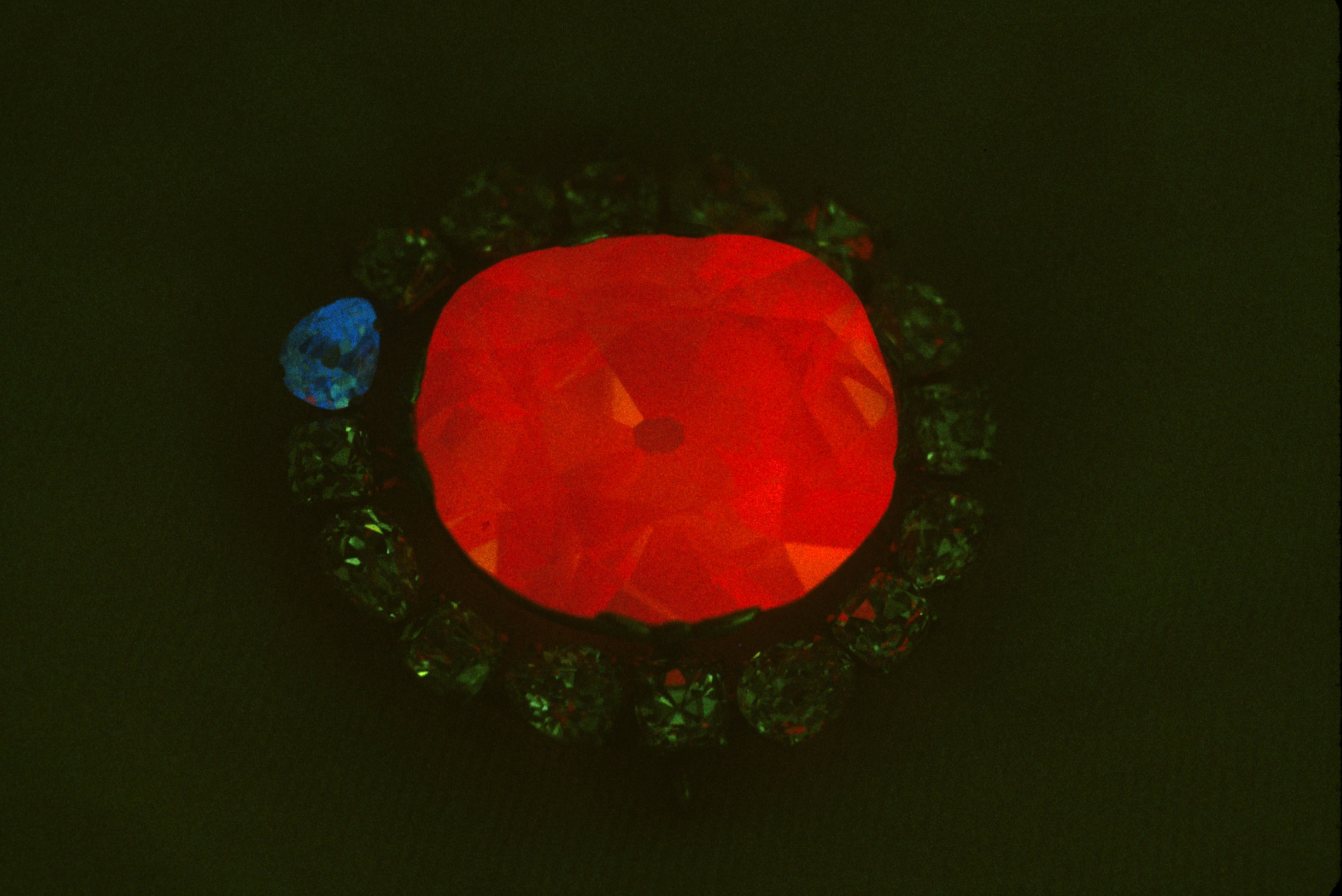New Research at the Smithsonian's National Museum of Natural History Reveals Insight into Hope Diamond's Fiery Red Glow
A study released in the January 2008 edition of the journal Geology proves that a blue diamond's rare appeal goes far beyond its beauty. The study was conducted by Jeffrey Post, curator of the National Gem Collection and mineralogist, at the Smithsonian's National Museum of Natural History. Post and six other researchers probed the mysterious phosphorescence of the Hope Diamond and other natural blue diamonds and discovered a way to "fingerprint" individual blue diamonds.
The 45.52-carat blue Hope Diamond is the centerpiece of the National Gem Collection on display at the National Museum of Natural History and it attracts the attention of millions of visitors each year. One aspect of this famous diamond that most people do not get to see is its fiery red phosphorescence that results from exposure to ultraviolet light, which continues for more than a minute. The mysterious red phosphorescence, rarely seen in other blue diamonds, added to the Hope Diamond's mystique and allure. However, the mystery has now been solved.
Researchers at the Smithsonian and the U.S. Naval Research Laboratory measured the phosphorescence spectra of the Hope Diamond and 66 other natural blue diamonds, including the 30.82-carat Blue Heart Diamond in the Smithsonian's National Gem Collection. Researchers found that almost all natural blue diamonds show phosphorescence that has components of blue and red light. In some cases, including the Hope Diamond, the red color dominates, and the phosphorescence appears red to the eye; but for other diamonds, the blue color dominates. The specific characteristics of the phosphorescence, such as the relative intensities of the blue and red components and how quickly it fades, were specific to each of the 67 diamonds in the study and provide a "fingerprint" that can be used by scientists and gemologists to identify individual natural blue diamonds.
"People typically think of the Hope Diamond as a historic gem, but this study underscores its importance as a rare scientific specimen that can provide vital insights into our knowledge of diamonds and how they are formed in the earth," said Post.
Researchers also tested lab-created and artificially treated blue diamonds, which showed different phosphorescence spectra than natural blue diamonds. This difference provides an additional means to identify the origins of blue diamond gemstones.
Prior to this study, only limited scientific research existed regarding the phosphorescence properties of natural blue diamonds. Due to the rarity and extreme value of blue diamonds, scientists had typically used synthetic diamonds in past research. Post and his colleagues' recent research took advantage of a unique opportunity to examine a large collection of natural blue diamonds from the museum and made available by diamond dealers.
# # #
Authors: Sally Eaton-Magaña, U.S. Naval Research Laboratory; Jeffrey E. Post, Smithsonian's National Museum of Natural History; Peter J. Heaney, Pennsylvania State University; Jaime Freitas, U.S. Naval Research Laboratory; Paul Klein, U.S. Naval Research Laboratory; Roy Walters, Ocean Optics; James E. Butler, U.S. Naval Research Laboratory.
SI-18-2008




